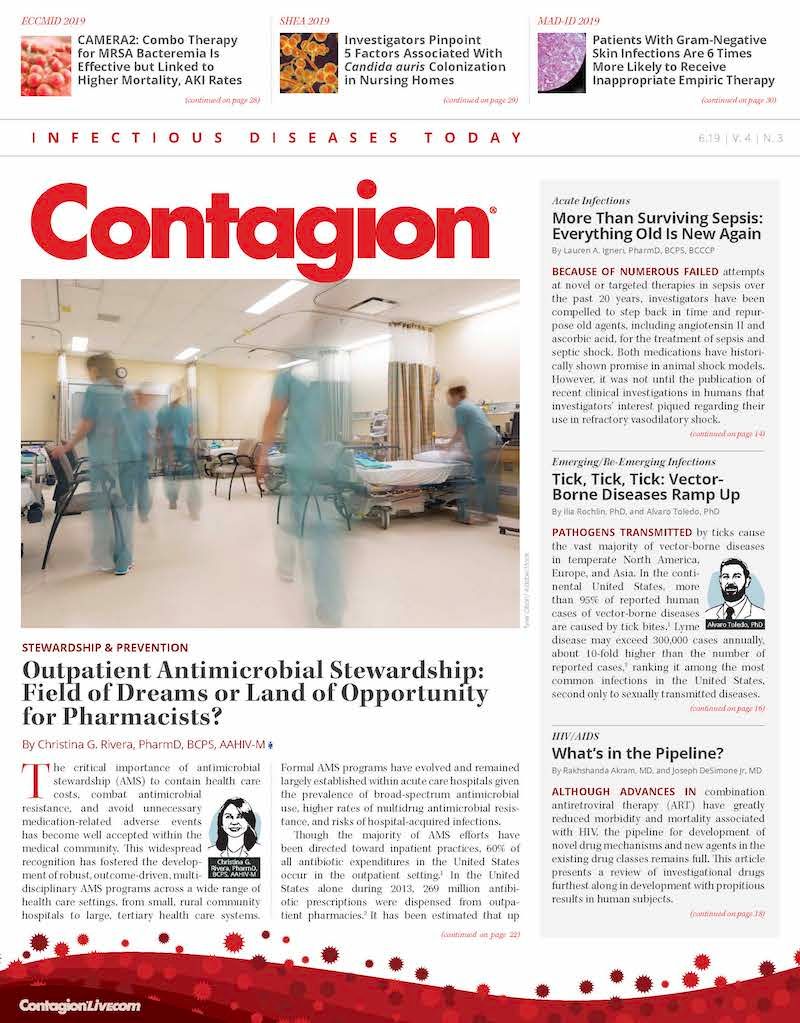Achaogen—Canary in the Coal Mine or Developer of an Unwanted Product?
The June Editor-in-Chief letter by Dr. Jason Gallagher tackles the story of Achaogen and what its bankruptcy means for antibiotic development.
In April, the infectious diseases world received bad news when Achaogen, the developers of plazomicin (Zemdri), announced that they were filing for bankruptcy. The company’s demise serves notice that the recent boom in antibiotic development, which led to the incredible success of the Infectious Diseases Society of America’s 10 x ’20 drug development initiative, comes with a notorious asterisk.
I am still amazed by the success of the focus on the desperate need for new antimicrobials. The goal of “10 new antibiotics by 2020” was reached ahead of schedule, and the pipeline contains several new agents with possible approvals in 2019 and 2020. Push incentives, which encourage antibiotic development by helping to reduce research and development costs, have been effective in lowering barriers of entry to the market for new entities, such as plazomicin. With the abandonment of antibiotic development by nearly all large pharmaceutical companies, small companies such as Achaogen with limited resources are left as the driving forces of drug development. I am thankful for these small companies and their interest in creating new antibiotics, but they are vulnerable to setbacks and are dependent on venture capitalists in ways that more robust companies are not.
Achaogen faced several setbacks. Their prospective study of plazomicin for carbapenem-resistant Enterobacteriaceae (CRE) infections was dogged by low enrollment, though it showed a significant difference in mortality, at the level of a 90% confidence interval. The US Food and Drug Administration ultimately did not grant the indication for CRE infections, leaving plazomicin with only the ubiquitous “complicated urinary tract infection” indication in its label. Although the results showed that fewer relapses occurred than with the β-lactam comparator, most of the pathogens studied were not the highly resistant organisms that clinicians would actually use the drug to treat.
On the other side, plazomicin is an aminoglycoside, and I think it should have been expected that any uptake of a new drug in this class would be slow. Aminoglycosides have well-known toxicity, which has probably become magnified in the minds of clinicians as more time passes from when they were commonly used. It was the third of 3 drugs with activity against CRE to be approved this decade, losing a race to establish a foothold in a limited market to 2 β-lactams with likely better safety margins (ceftazidime-avibactam and meropenem-vaborbactam). Plazomicin faced an uphill battle.
So what’s the lesson here? Now that we finally have new antibiotics, does the Achaogen story portend a future in which the companies fail after they are approved, or is it the tale of a company with an antibiotic that was a reach in the first place? I feel that it is a little bit of both. Other antibiotic companies with newly approved products have seen their stock prices drop and may face difficulty generating the investment they require before their drugs become profitable. Formulary uptake of new antibiotics is consistently delayed, even when they successfully address unmet medical needs. Expectations for new products need to be tempered.
What would help? Pull incentives. Now that antibiotics are being approved and delivered to the market, we need to ensure that they stay there and remain available for patients. Models such as transferable patent extensions could both reenergize large pharmaceutical companies into antibiotic development and reward smaller companies for successful research. As it stands, our need for new antimicrobials, continuously fed by bacterial evolution, is being falsely met by our current drug development model.
Our feature article this month, by Christina G. Rivera, PharmD, BCPS, AAHIV-M, discusses whether outpatient antimicrobial stewardship is a field of dreams or land of opportunity for pharmacists.
As always, enjoy this issue, and keep up with us at ContagionLive.com.
Gallagher is a clinical professor at Temple University School of Pharmacy and clinical pharmacy specialist in infectious diseases at Temple University Hospital, both in Philadelphia, Pennsylvania. He is also the director of the PGY2 Residency in Infectious Diseases Pharmacy at Temple. *He is an active member of the Society of Infectious Diseases Pharmacists.

